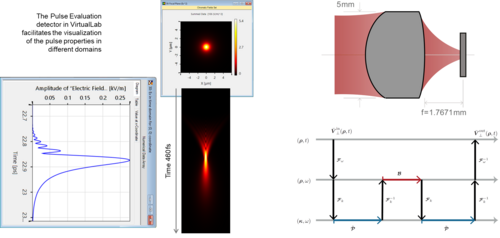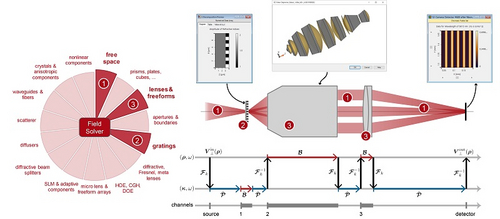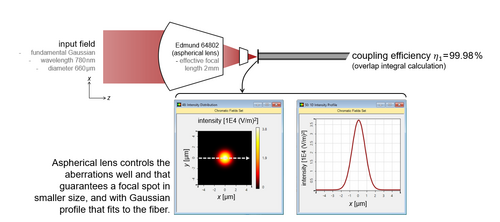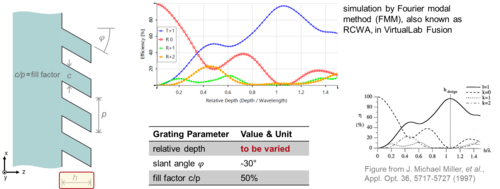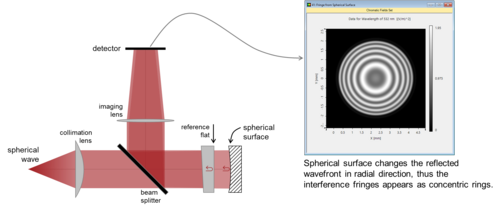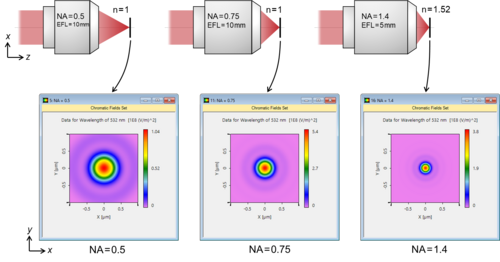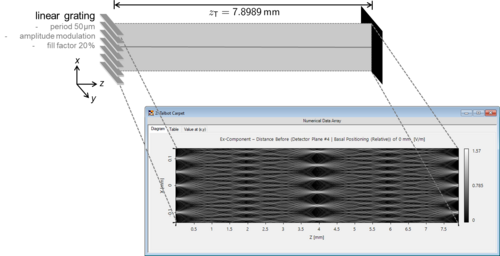What’s new?
Spatial-Temporal Behavior of Ultrashort Pulses
Ultrashort pulse lasers, with time duration in femtoseconds, are of great importance and potential for both fundamental research and industrial applications. For example, such lasers enable the extremely precise processing of materials, which is known as “cold” ablation. In VirtualLab Fusion, an ultrashort pulse is modeled as a composition of a broadband spectrum, and the correlation between the different spectral modes is considered. That enables the investigation of ultrashort pulse behavior in both spatial-temporal (or spatial-spectral) domain, as shown in the examples below.
Read moreVirtualLab Fusion Training Courses in Winter 2020 | USA
Learn from our optical engineering experts how to use VirtualLab Fusion efficiently. Register for both courses or only one, depending on your previous experience working with VirtualLab Fusion.
Since numerous new features are included in our VirtualLab Fusion Winter Release 2019, these courses would be interesting for current users as well.
USA | 10 – 13 February 2020
Read moreBest of Use Cases No. 4 – Fiber Coupling
As we look back with gratitude on a wonderful year of luminous moments, we wish you and your family a radiant holiday season and a bright New Year!
Read moreBest of Use Cases No. 3 – Cross-Platform Optical Modeling and Design
To spread some holiday spirit this year, we have decided to send four special newsletters showcasing our "Top Use Cases 2019".
What makes it so special: there is also something to win.
Best of Use Cases No. 2 - Slanted Gratings
To spread some holiday spirit this year, we have decided to send four special newsletters showcasing our "Top Use Cases 2019".
What makes it so special: there is also something to win.
Read moreWin one VirtualLab Fusion Introduction Training!
To spread some holiday spirit this year, we have decided to send four special newsletters showcasing our "Top Use Cases 2019".
What makes it so special: there is also something to win.
Rayleigh Criterion
The Rayleigh criterion is often used in practice to characterize the resolution limit of microscope or telescope systems. It is defined as follows: when the center of the diffraction pattern of one point is just overlapped with the first minimum of the diffraction pattern of another point, according to the Rayleigh criterion they can just be resolved. With VirtualLab Fusion, we investigate three real objective lenses with different values of the NA (numerical aperture) following Rayleigh’s theory, and also compare the lens performance with the ideal case predicted by the Debye-Wolf integral.
Read moreTalbot Effect
The Talbot effect, one of the best-known diffraction effects in relation to gratings, was first observed in 1836 by Henry Fox Talbot. When a periodic structure, e.g. a grating, is illuminated by a plane wave, one can observe the image of the grating at a certain distance (or its multiple) behind the grating. This specific distance is called the Talbot length. Thanks to the automatized free-space propagation technology in VirtualLab Fusion, such effects can be easily and accurately reproduced and analyzed. We demonstrate it with both linear and crossed gratings as examples.
Read more



